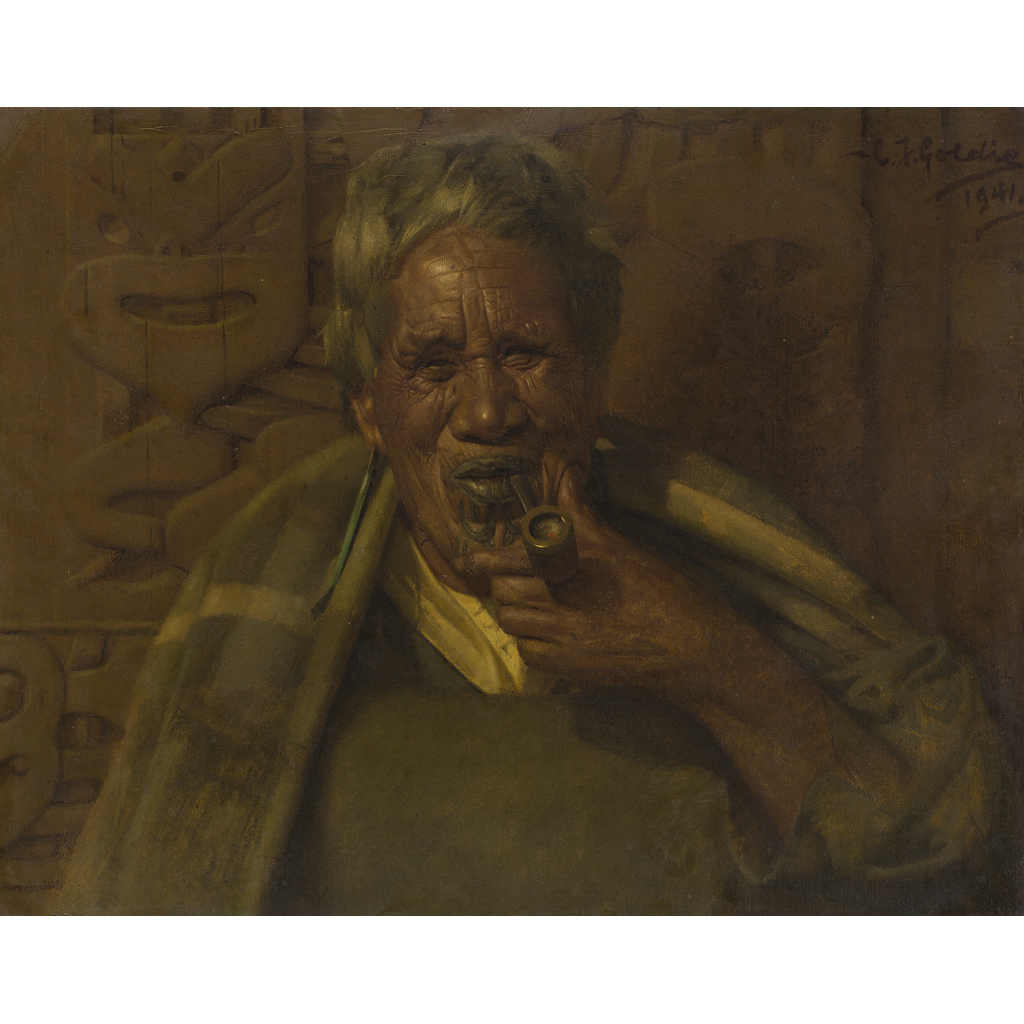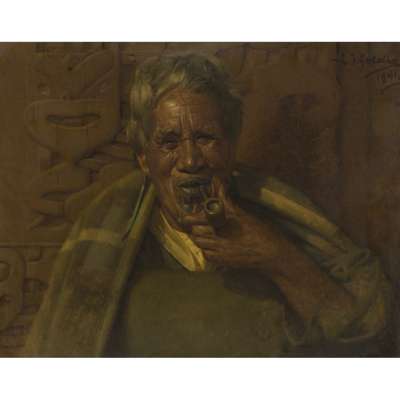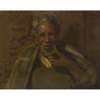
Lot 65

CHARLES FREDERICK GOLDIE O.B.E. (NEW ZEALAND 1870-1947)
KA PAI TE KAI PAIPA, PORTRAIT OF TE HEI, A MAORI CHIEFTAINESS


British and European Paintings
Auction: 24 November 2016 at 11:00 GMT
Description
Signed and dated 1941, inscribed with title verso, oil on canvas
Dimensions
40.5cm x 51cm (16in x 20in)
Footnote
Provenance: Major Charles and Ellen Passmore, and thence by descent to the present owner. Major Charles Passmore was a New Zealander with a distinguished military record. Wounded twice during World War Two, he was awarded the Military Cross.
Note: The sitter was a chieftainess of the Ngatiraukawa tribe.
She was painted by Goldie several times in the course of 13 years.
Born in Auckland, New Zealand in 1870, Charles Goldie displayed an early aptitude for painting and won prizes at the Auckland Society of Arts and the New Zealand Art Students' Association. On leaving school he worked in his father's business while continuing art studies under the painter Louis John Steele, who had trained at the École des Beaux-Arts in Paris and who inspired Goldie to look to France.
Sir George Grey, the New Zealand Premier, was so taken by Goldie's two still-life paintings exhibited at the Auckland Academy of Art in 1891, that he convinced the painter's father to allow his son to travel to Paris, and in July 1893 Goldie enrolled at the Académie Julian. For almost five years, until January 1898, he studied in the Parisian atelier under the renowned Salon painter William-Adolphe Bouguereau.
Goldie Returned to New Zealand in 1898 and established the 'French Academy of Art' with Steele. Together they produced a masterwork, a painting of Maoris arriving in New Zealand based on Gericault's 'Raft of the Medusa,' which was bought by Auckland Art Gallery. But Goldie's true metier was to be in portraiture.
From 1901 he began to make trips to visit Maori people, sketching and photographing them whenever he could. Mostly, following in a tradition set by Steele, he painted senior Maori elders. As his fame grew, however, models began to come to sit for him in his Auckland studio, draped in a cloak or in a combination of a blanket and velvet.
The sitter in the offered painting, Te Hei, was also captured by the artist in two portraits executed in 1907: a front-facing work and a profile study entitled 'Touched by the Hand of Time.' An additional painting depicting the sitter was also executed in 1909 (this was one of the works stolen from Wellington's National Art Gallery in 1969). The fact that Goldie returned to re-engage with Te Hei after 11 years is indicative of the long-standing relationships he maintained with his sitters, and the extent to which he felt invested in documenting his subjects with artistic integrity over the years.
Goldie faced criticism in the early 1910s for his photo-realism and during the Great War he began to produce smaller scale paintings on panel which were often copies of his earlier larger paintings, whose sitters were by now deceased. Following his marriage in 1920, he produced little work over a decade, but resumed painting around 1930 in a looser style, giving his new works moralizing or provocative titles. In 1934 and 1935 he exhibited at the R.A. in London and in the latter year was appointed O.B.E.
This work, entitled 'Ka Pai te Kai Paipa (Smoking is Great)' is typical of his later output, being a version of an earlier portrait. A classic of its type, it dates from 1941, shortly before Goldie gave up painting completely and six years prior to his death in 1947.

